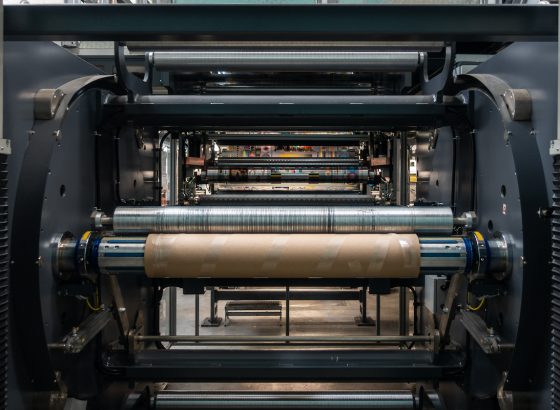The roll-to-roll system is a fabrication method used in manufacturing and accounts for $10 billion in revenue. More specifically, roll-to-roll manufacturing is expected to grow sixfold before 2030.
This process coats, embeds, prints or laminates various types of flexible materials in the form of a web as it is fed from one roller to another. The entire roll-to-roll system often utilizes several rollers, called the web path. In some circles, “roll-to-roll” and “web handling” are interchangeable. No matter which term you prefer, Maxcess has decades of custom web handling experience in the industry.
An Overview of Roll-to-Roll Manufacturing
In a roll-to-roll system, a rolled substrate is unrolled to undergo processing. This can range from cutting, lamination, coating, etc. The finished substrate is then re-rolled when it is completed. However, this is a simple example. Most roll-to-roll manufacturing involves several basic web handling procedures being applied to the substrate.
When compared to conventional methods, roll-to-roll systems offer a host of benefits. The process improves life cycle costs while also making it easy to increase the scale of an operation. Efficiency is truly maximized when manufacturing mandates multiple sequential steps. A well-designed web system can make manufacturing quicker and cheaper without compromising quality.
Roll-to-Roll Processes Explained
The key to successful, optimized roll-to-roll manufacturing is through automation and the intimate knowledge of how the individual systems interact and affect each other. These systems include but are not limited to, web tension, web guiding, slitting and winding, and vision systems.
Web guiding automation works similarly. Web guiding systems, controllers, and sensors can all be used to minimize material waste and downtime. Most web guiding systems were initially used in printing newspapers but have been adapted to serve countless other industries.
Slitting and winding automation also play an essential role. Slitting refers to cutting material into smaller and narrower pieces. Slitting is typically done as the master roll is initially unraveled. Automated slitting and winding systems dramatically reduce labor costs and minimize the risk of workplace injuries.
For consistent outputs, the web tension must be well regulated. This is achieved by using sensors that can adjust the acceleration and deceleration throughout the entire web. In addition, we design our own tension controllers to keep production running smoothly.
Lastly, vision systems can be used to automate quality control inspections. For example, most roll-to-roll manufacturing uses plastics at some point, which are well known for containing impurities. Our vision systems can analyze plastic films for black specs, oil stains, holes, fish eyes, insects, and many other defects.
Popular Roll-to-Roll Applications and Industries
While roll-to-roll systems are helpful in the manufacturing of textiles and fibers, their usefulness doesn’t end there. Roll-to-roll systems can also carry metals, plastics, fuel cell membranes, and practically any solid substrate that has some degree of flexibility. For this reason, you can find roll-to-roll systems across numerous industries.
This includes components used in electronic device manufacturing, flexible photovoltaics, electrolysis components, thin-film batteries, membranes for filtration and sewage treatment, metal foil manufacturing, industrial coatings, the paper industry, and specific medical parts and products.
Find Complete Roll-to-Roll Processing Solutions
While roll-to-roll manufacturing is easy to understand on a conceptual level, building a roll-to-roll system is quite complex. Tension management, successful automation, and reducing the possibility of human error require a high level of expertise.
Expertise in these systems is what we offer here at Maxcess. We take a consultative approach with our clients to design the best roll-to-roll system for their specific projects. If you have any questions about our products or services, feel free to contact us today.
